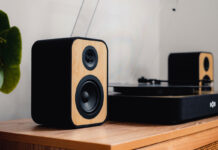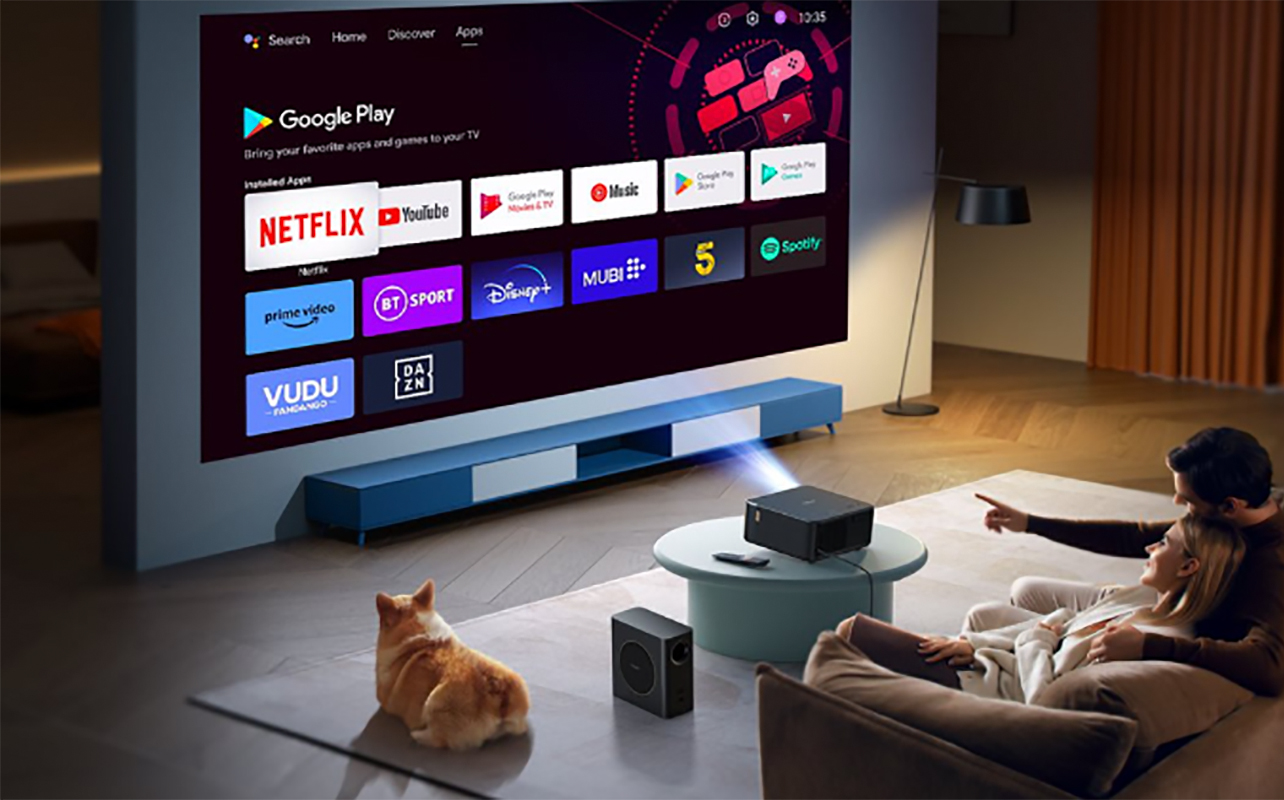
Imagine getting a movie theatre-like experience at home with a massive TV—or better yet, a projector? Whether it’s in a dedicated theatre room, living room, basement, even your garage or outside, it’s entirely possible. When you’re choosing a projector and screen, however, there are factors you need to consider. They include the right dimensions, aspect ratio, and size for the space. The type of projector is also crucial, considering short throw vs. long throw as well as ultra-short throw. This tells you how far the projector can (and should) be from the screen to properly project an image.
In this guide, I’ll help you understand what throw distance is, what these different types of projectors mean, and how to choose the right one for your home.
What is projector throw ratio?
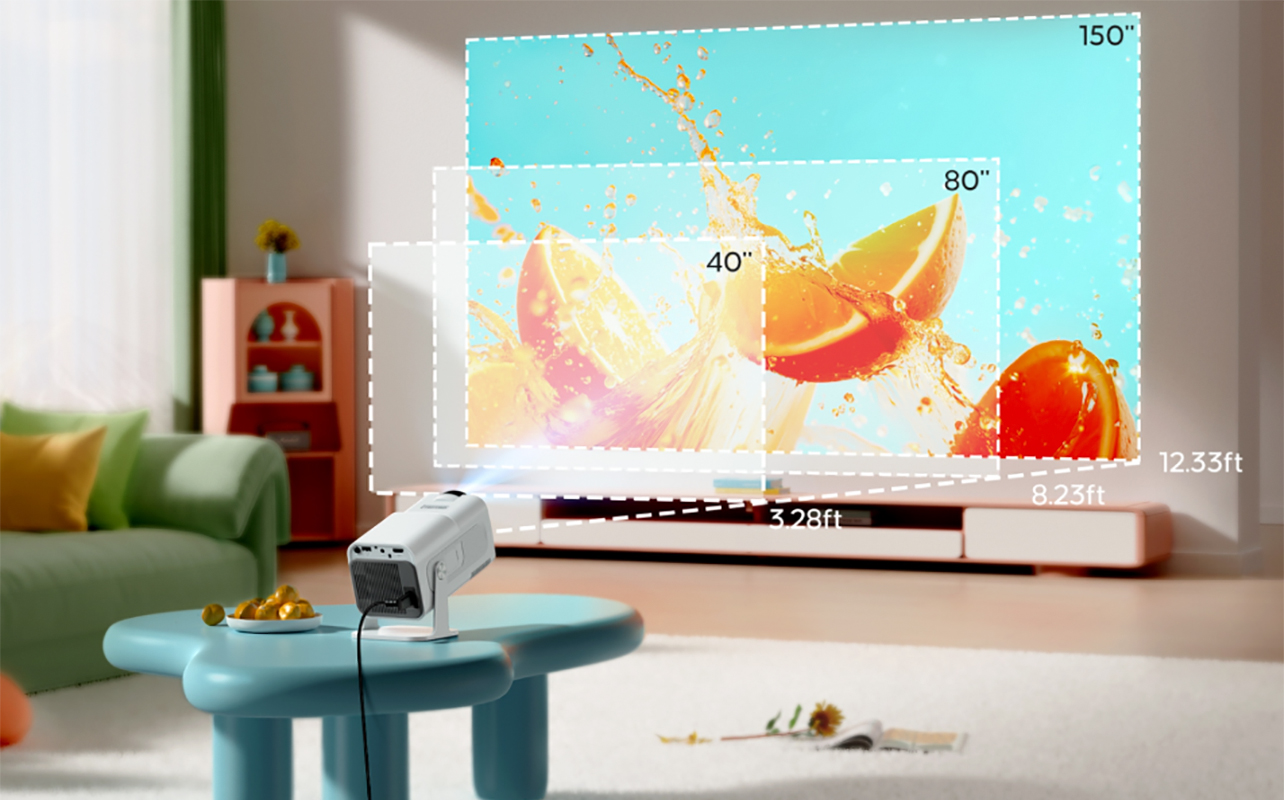
As noted, projector throw ratio refers to the maximum distance the projector can be positioned from the screen. Distance and placement will determine how big the image the projector “throws” onto the surface, whether it’s a projector screen, wall, or white sheet. To determine the throw ratio, take the distance from the screen and divide it by image width. For example, if you place a projector 10 feet away from a screen that is five feet wide, the throw ratio would be 2.0 (10÷5=2). Simply, a ratio of 2.0:1 means the projector must be placed at a distance that’s twice the width of the projected image.
This is important for determining what type of projector you need to accommodate the room’s set-up. It could be a large open space, for example, or a smaller one where the projector is closer. Keep in mind that throw distance doesn’t generally impact picture quality. To ensure you get the best picture, regardless of type, you need to look into details like resolution, brightness, contrast ratio, and refresh rate. Consult our projector buying guide to learn more about these aspects.
The three main types you can choose from include long throw projectors, short throw projectors, and ultra-short-throw (UST) projectors.
What is a long throw projector?
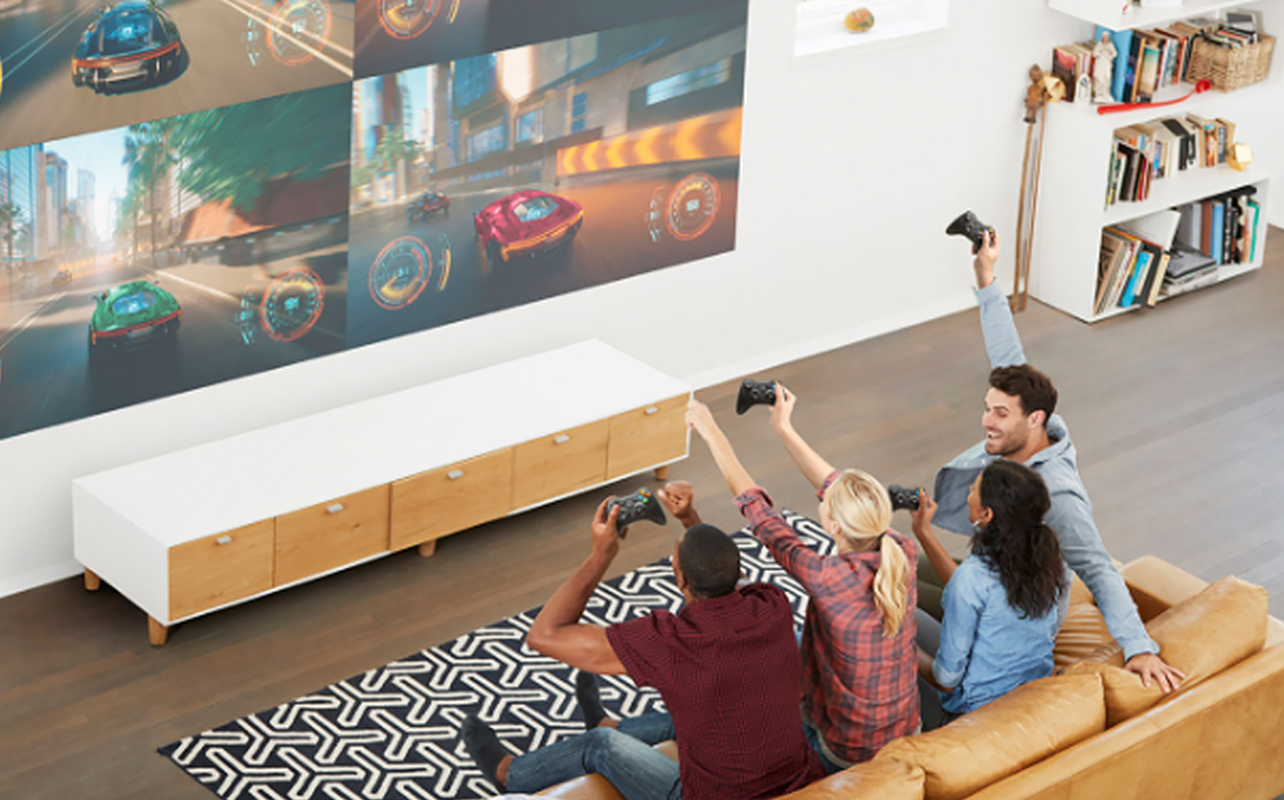
Let’s start with a long throw projector. The typical throw ratio with a long throw projector is >1.0:1. This means you’ll need to position it at least eight feet away if you want to view a 100-inch picture without any loss in quality and clarity. Long throw projectors are ideal for larger rooms, especially where they can be ceiling- or wall-mounted. They offer the most flexibility in terms of screen sizes. But you need a big open space.
Because of its distance from the screen, it’s possible that people walk in front of it casting shadows onto what you’re watching. Long throw projectors can also be more susceptible to glare from ambient light. On the flip side, they can also be placed out of the way, eliminating clutter. You also won’t be distracted from the operational noise nor the generated heat.
Long throw projectors tend to be less expensive. They are best suited for dedicated home theatres with sweet spot seating, classrooms, and large conference or boardrooms.
What is a short throw projector?
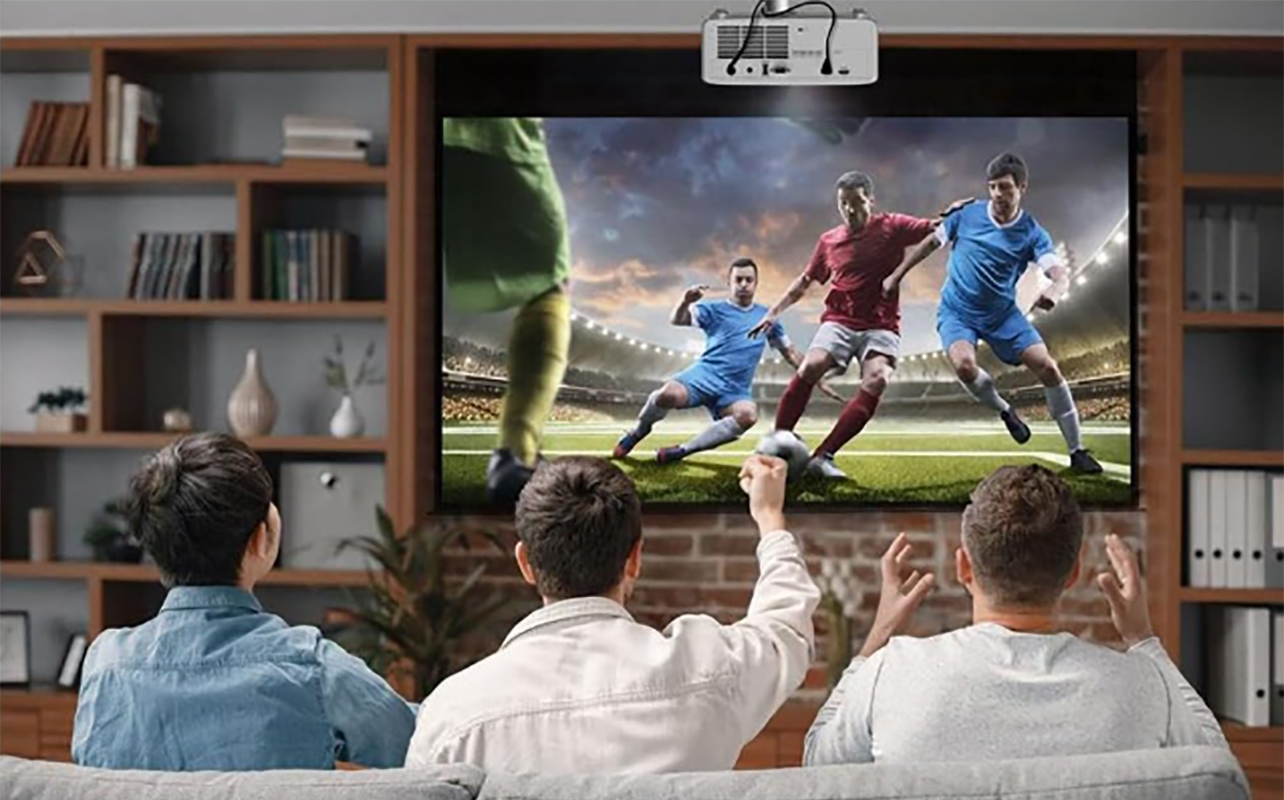
With a short throw projector, the typical throw ratio is anywhere between 0.4:1 and 1.0:1, so it can be placed much closer. You can project a large image from 3-8 feet away, making them suitable for smaller spaces. They’re popular options for living rooms, dens, gaming rooms, and even smaller apartments.
There are less shadow interference and glare since it’s less likely someone will walk in front of it. But they require careful alignment: if they are on an uneven surface, you might see some image warping. The operational noise is also more noticeable since it’s closer to you. They also tend to be larger in size (though both short throw and long throw projectors come in mini versions as well). You can mount them on a ceiling closer to where the screen is or even place them tabletop. They usually have less zoom capabilities. But you can manually move it closer to the screen as needed (if it isn’t mounted).
Short throw projectors are also usually more expensive since they have more advanced lenses and technology to be able to work from a closer distance. They’re best for modern home set-ups where aesthetics and space-saving are top priorities.
What is an ultra short throw projector?
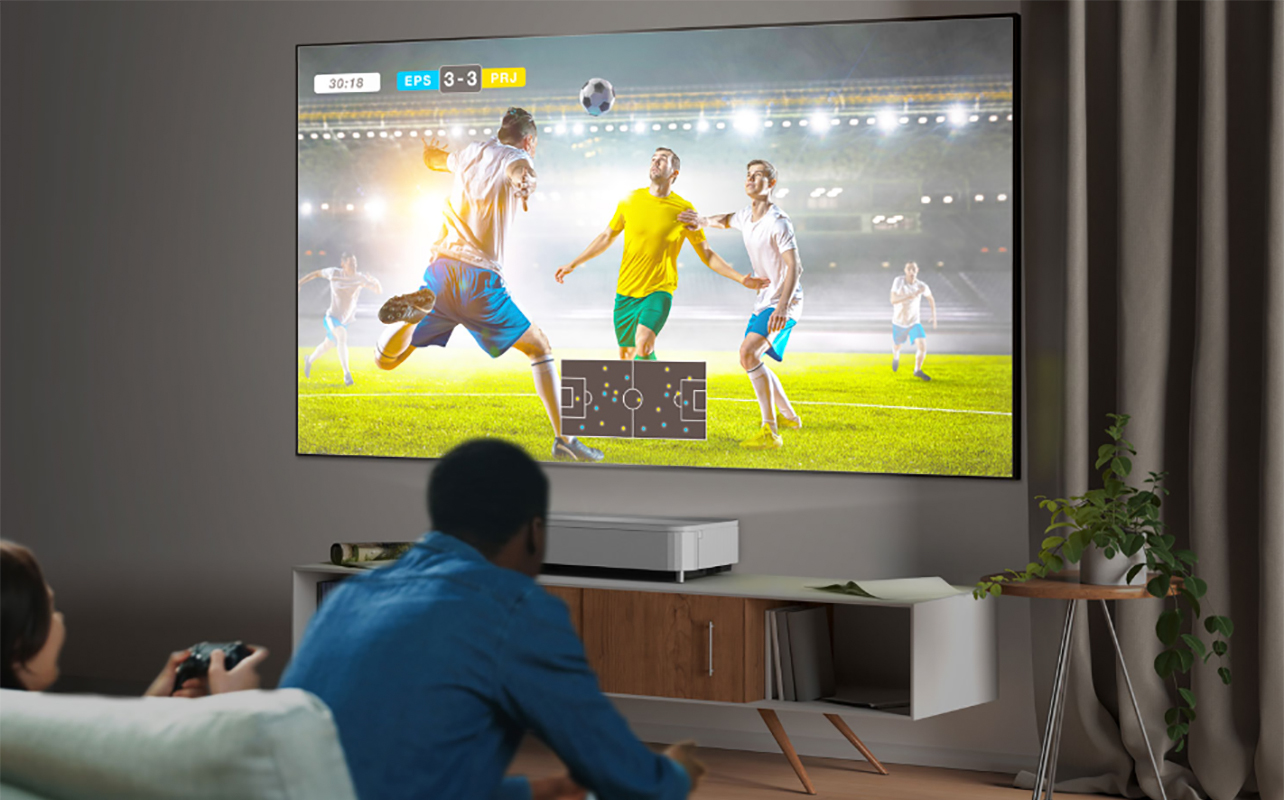
A third option worth considering is an ultra short throw projector, which is a variation of a short throw projector. It allows you to project an image from an even shorter distance than a traditional short throw projector. The throw ratio might be something closer to 0.8:1. That could be as close as five feet away to view an image as large as 80 inches in size—or even just a foot away for a massive 100-inch image.
They’re ideal for very tight spaces, like in a tent on a camping trip, an RV, or a small bedroom. They’re also great for gaming. You don’t have to worry about shadows nor glare. And there’s no complicated installation process, though you need to find the proper placement for the best image.
Ultra short throw projectors are typically priced at a premium. But they are best for space-limited areas, use on the go, and for the most convenient, clutter-free and seamless set-up.
Here’s some tips: Also consider how projector screen dimensions work for the best possible viewing experience. Take measurements and ensure you have nearby power sources and factor in ambient light. Don’t forget the tools required for setting up the projector (if mounted) and screen.
Short throw vs long throw projectors: key differences
Let’s take an overview look at the key differences between short throw and long throw projectors.
| Short throw projectors | Long throw projectors | |
| Throw distance | 3-8 feet | 8+ feet |
| Typical image size | Approx. 100 inches | 100+ inches |
| Cost | $100–$8,000 (varies widely, including mini models) | $120–$3,000 (varies widely, including mini models) |
| Ease of set-up and installation | Simple but requires proper placement | May require professional installation for ceiling or wall mounting |
| Best use case | Smaller rooms, apartments, on the go | Larger spaces, classrooms, boardrooms |
Which one is right for you?

Consider the room size. If you live in a small apartment or you want the projector for a smaller room, like a living room in the cottage or bedroom, go with a short throw projector. If you’re setting it up in a larger room, like a basement, large living room, or a dedicated theatre room, a long throw projector is the better option.
Along with room size, the choice might also come down to budget and convenience. It’s also worth noting that you need to take screen compatibility and light environment into account. The size and type of projector screen you have or plan to get might impact your decision. The ambient room conditions will play a role, too. What if the room has windows, for example, and you want to watch in brighter conditions before the sun goes down? You’ll want a projector with a higher brightness level, measured in ANSI lumens, to counteract this.
Enjoy the theatre experience at home
There are a lot of advantages to a projector set-up in certain rooms of the home, including the ability to project an image as large as 100-150 inches in size (or bigger!) to provide a full home theatre experience. But it’s important to choose the right type of projector between short throw vs long throw to get the perfect view. Balance this against the space you have in the room along with your image needs, ambient lighting conditions, and, of course, budget.
Once you have an idea of what you want, explore all types of projectors, organized by throw type, at Best Buy Canada.




